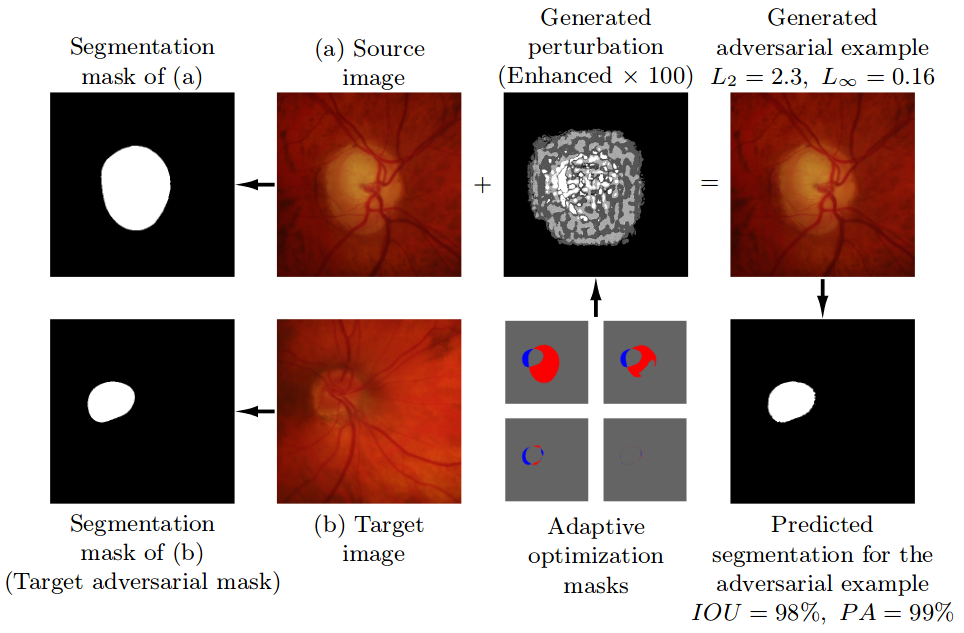Causal-Adversarial-Instruments
This is a PyTorch Implementation code for developing super fast adversarial training. This code is combined with below state-of-the-art technologies for accelerating adversarial attacks and defenses with Deep Neural Networks on Volta GPU architecture.
- Distributed Data Parallel [link]
- Channel Last Memory Format [link]
- Mixed Precision Training [link]
- Mixed Precision + Adversarial Attack (based on torchattacks [link])
- Faster Adversarial Training for Large Dataset [link]
- Fast Forward Computer Vision (FFCV) [link]
Citation
If you find this software helpful, please cite it as:
@software{Causal_AI_2022,
author = {Byung-Kwan Lee, Junho Kim},
title = {Causal-Adversarial-Instruments},
url = {https://github.com/ByungKwanLee/Causal-Adversarial-Instruments},
version = {0.1},
year = {2022}
}
Library for Fast Adversarial Attacks
This library is developed based on the well-known package of torchattacks [link] due to its simple scalability.
Under Developement (Current Available Attacks Below)
Environment Setting
Please check below settings to successfully run this code. If not, follow step by step during filling the checklist in.
- To utilize FFCV [link], you should install it on conda virtual environment. I use python version 3.8, pytorch 1.7.1, torchvision 0.8.2, and cuda 10.1. For more different version, you can refer to PyTorch official site [link].
conda create -y -n ffcv python=3.8 cupy pkg-config compilers libjpeg-turbo opencv pytorch==1.7.1 torchvision==0.8.2 cudatoolkit=10.1 numba -c pytorch -c conda-forge
- Activate the created environment by conda
conda activate ffcv
- And, it would be better to install cudnn to more accelerate GPU. (Optional)
conda install cudnn -c conda-forge
- To install FFCV, you should download it in pip and install torchattacks [link] to run adversarial attack.
pip install ffcv torchattacks==3.1.0
- To guarantee the execution of this code, please additionally install library in requirements.txt (matplotlib, tqdm)
pip install -r requirements.txt
Available Datasets
Available Baseline Models
- VGG (model/vgg.py)
- ResNet (model/resnet.py)
- WideResNet (model/wide.py)
- DenseNet (model/dense.py)
How to run
After making completion of environment settings, then you can follow how to run below.
- First, run
fast_dataset_converter.pyto generate dataset with.betsonextension, instead of using original dataset [FFCV].
# Future import build
from __future__ import print_function
# Import built-in module
import os
import argparse
# fetch args
parser = argparse.ArgumentParser()
# parameter
parser.add_argument('--dataset', default='imagenet', type=str)
parser.add_argument('--gpu', default='0', type=str)
args = parser.parse_args()
# GPU configurations
os.environ["CUDA_VISIBLE_DEVICES"]=args.gpu
# init fast dataloader
from utils.fast_data_utils import save_data_for_beton
save_data_for_beton(dataset=args.dataset)
- Second, run
fast_pretrain_standard.py(Standard Training) orfast_pretrain_adv.py(Adversarial Training)
# model parameter
import argparse
parser = argparse.ArgumentParser()
parser.add_argument('--dataset', default='imagenet', type=str)
parser.add_argument('--network', default='resnet', type=str)
parser.add_argument('--depth', default=50, type=int)
parser.add_argument('--gpu', default='0,1,2,3,4', type=str)
# learning parameter
parser.add_argument('--learning_rate', default=0.1, type=float)
parser.add_argument('--weight_decay', default=0.0002, type=float)
parser.add_argument('--batch_size', default=512, type=float)
parser.add_argument('--test_batch_size', default=128, type=float)
parser.add_argument('--epoch', default=100, type=int)
or
# model parameter
import argparse
parser = argparse.ArgumentParser()
parser.add_argument('--dataset', default='imagenet', type=str)
parser.add_argument('--network', default='resnet', type=str)
parser.add_argument('--depth', default=18, type=int)
parser.add_argument('--gpu', default='0,1,2,3,4', type=str)
# learning parameter
parser.add_argument('--learning_rate', default=0.1, type=float)
parser.add_argument('--weight_decay', default=0.0002, type=float)
parser.add_argument('--batch_size', default=1024, type=float)
parser.add_argument('--test_batch_size', default=512, type=float)
parser.add_argument('--epoch', default=60, type=int)
# attack parameter
parser.add_argument('--attack', default='pgd', type=str)
parser.add_argument('--eps', default=0.03, type=float)
parser.add_argument('--steps', default=10, type=int)






![[CVPR'21] Projecting Your View Attentively: Monocular Road Scene Layout Estimation via Cross-view Transformation](https://github.com/JonDoe-297/cross-view/raw/main/images/teaser.png)





